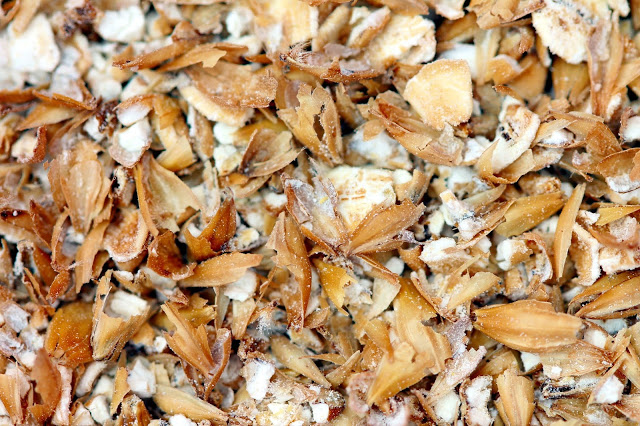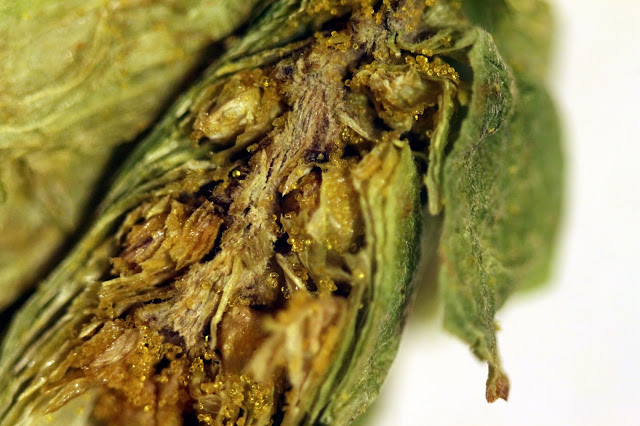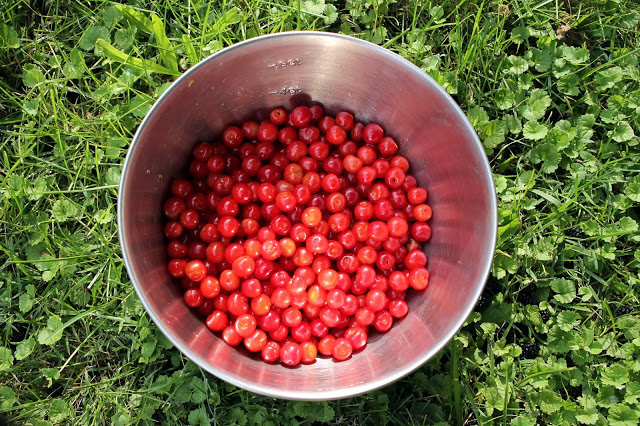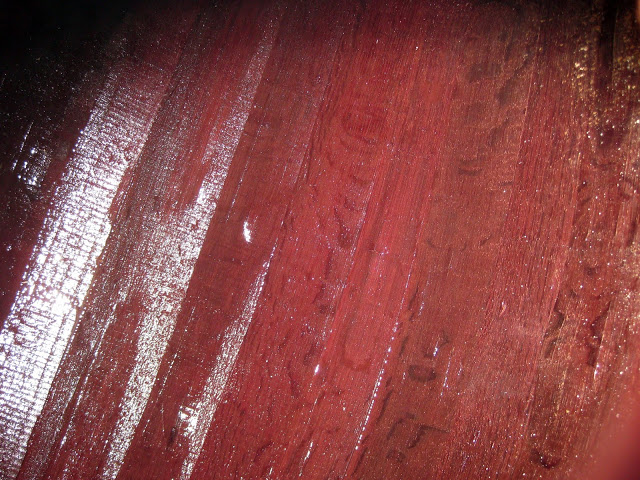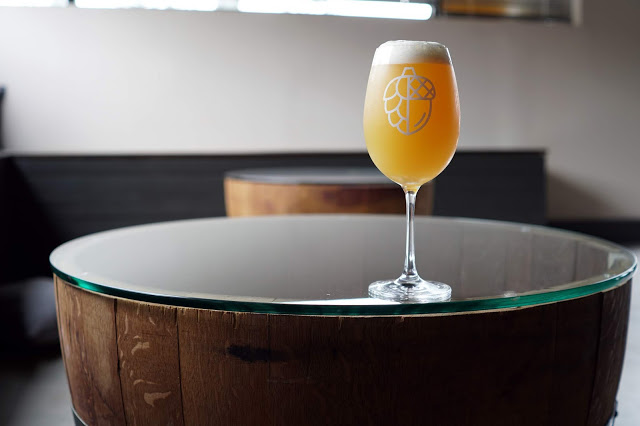This week I take a look at how to read a yeast data sheet for brewing yeasts and how to
carbohydrates
This week I take a look at the yeast variant diastaticus more formally known as saccharomyces cerevisiae var. diastaticus. This
 This week I take a closer look at the mashing process and what is actually going on when we mash malted barley and then sparge it to produce wort during the brewing process. The Purpose of Mashing Mashing is, in its most simple form, a process that breaks longer carbohydrate molecule chains into simpler sugars […]
This week I take a closer look at the mashing process and what is actually going on when we mash malted barley and then sparge it to produce wort during the brewing process. The Purpose of Mashing Mashing is, in its most simple form, a process that breaks longer carbohydrate molecule chains into simpler sugars […]  Dr Charlie Bamforth joins me this week to discuss health, wellness benefits and risks with beer. Subscribe on iTunes to Audio version or Video version or Spotify or Google Play Download the MP3 File– Right Click and Save As to download this mp3 file. Your browser does not support the audio element. Topics in This […]
Dr Charlie Bamforth joins me this week to discuss health, wellness benefits and risks with beer. Subscribe on iTunes to Audio version or Video version or Spotify or Google Play Download the MP3 File– Right Click and Save As to download this mp3 file. Your browser does not support the audio element. Topics in This […] Social media stars to partner with Mighty Craft and Torquay Beverage Co.
The post The Inspired Unemployed to launch Better Beer Co appeared first on Beer & Brewer.
 Mitch Steele joins me this week to discuss brewing low-calorie and low carbohydrate beer as well as seltzer. Subscribe on iTunes to Audio version or Video version or Spotify or Google Play Download the MP3 File– Right Click and Save As to download this mp3 file. Your browser does not support the audio element. Topics […]
Mitch Steele joins me this week to discuss brewing low-calorie and low carbohydrate beer as well as seltzer. Subscribe on iTunes to Audio version or Video version or Spotify or Google Play Download the MP3 File– Right Click and Save As to download this mp3 file. Your browser does not support the audio element. Topics […] I, Pencil is a classic economics essay from 1958 by Leonard Read about the complexity of making a pencil. The iconic yellow #2 seems so simple, yet no one person could make it on their own (e.g., harvest the rubber, synthesis the polymers and pigments for the eraser, create the yellow paint, precisely cut the wood and graphite, mine and forge the metal band etc. ). The global economy doesn't have any person or group coordinating all of this activity, but to earn money people and companies fill niches, specialize, and compete to buy and sell in ways that creates things of immense complexity requiring the sum work of hundreds of people across continents so you can buy a pencil for $.25. This video gives a more hands-on view of what it takes to make a chicken sandwich when you don't buy anything from a supermarket.
It is tempting to say that beer isn’t like that. After all, each all-grain batch starts with the four basic ingredients and we do the rest… sure it would be a challenge to grow and malt barley, harvest and dry hops, isolate/propagate wild yeast, and haul water from a local stream, but what vessels would you use to boil/ferment? What about sanitizer, minerals, clarifiers, compressed CO2?
What follows is a high-level overview of what is required to brew a single batch of beer at Sapwood Cellars. Obviously, you could keep digging deeper into each one of these, peeling back layer-after-layer to the inputs of each input (e.g., the shoes that the hop harvester was wearing). I’ll arbitrarily stop where I lose interest. Needless to say though, the work of thousands in not millions of people goes into each of our batches. Scott and I just get the credit (or blame) because we're the ones at the end of the chain!
Ingredients
Water
Our water comes from Liberty Reservoir. From there it goes to Baltimore’s Ashburton water treatment plant. Baltibrew posted a nice series on the Baltimore water system. Luckily for us the existing minerals are mostly beneficial to the character of our beer. The carbonate is a bit higher than we’d like, but not by enough to require the waste of reverse osmosis.
Once pipes take it to the brewery it passes through a carbon filter to remove chlorine, and then an on-demand hot water heater. The fuel is natural gas piped into the brewery by BG&E (by way of fracking or older methods, and then refining). From there the water travels through a hose to our hot liquor tank where an electric element allows us to adjust the temperature. The electricity comes from a mix of fossil fuels, nuclear, and ~5% renewables.
To adjust the mineral content of the water, we add calcium chloride (from limestone-hydrochloric acid reaction or natural brine concentration) and calcium sulfate (harvested and refined from gypsum rock deposits). In addition, we add 75% phosphoric acid to adjust the pH of the water. Phosphoric acid is usually produced by combustion, hydration, and demisted from three ingredients: phosphorus, air, and water.
Grains
The grain we mash is a mixture of barley, wheat, oats, and rye depending on the beer. These are grown primarily on farms in North America and Europe. It is then soaked, sprouted, dried, and kilned by a maltster. The precise equipment required varies by malt and producer. In some cases it is a large industrial operation, in others the malt is still manually turned. The bulk of our base malt is Rahr brewer’s 2-row from Minnesota, but in our first order we also had sacks from Briess, Chateau, Simpsons, Crisp, Best etc. Most of the unmalted flaked grains (steamed and rolled to gelatinize their starches) are from Grain Millers.
We decided to hold-off on buying our own mill, to save the cost at the start… but after a few brews I can say a mill and auger are in our near future. We order our grains from Brewers Supply Group, which pre-mills the grain. We also occasionally add a few sacks to a Maryland Homebrew order from Country Malt.
Once we’re done with the now “spent” grain, they are picked-up by Keith of Porch View Farms. He feeds it to his animals as most of the carbohydrates are extracted into the wort, but proteins remain.
Hops
Our hops are grown throughout the higher latitudes of the globe, primarily the Pacific Northwest of the United States, but also Australia, Germany, and Czech Republic. The hops are first stripped from their bines, dried in an oast, and then baled. After selection, various lots are blended to create a consistent product and the hops are pulverized and pelletized. They are then vacuum-packed in mylar and stored cold to preserve their aromatics. Our hops primarily came from Hop Havoc, but we’re working on getting contracts for the upcoming harvest.
Yeast
Most of the yeast we’re using are the decedents of yeast that have been fermenting beer for hundreds or thousands of years. A couple hundred years ago their ancestors were part of a mixed-culture at breweries in England and Belgium, only to be lucky (and talented) enough to be isolated as a pure culture that gained success. Our Saccharomyces cerevisiae so far has come from RVA, Fermentis, and Lallemand for our “clean” beers. These needed to be isolated, propagated, and in some cases dried.
The sour and wild beers are too complex to track. They come from labs, bottle dregs, and a house culture. They may have come via a barrel, the breeze, an insect, or any number of other vectors into a brewery or labs. For example the Hanseniaspora vineae we are fermenting a hoppy sour for Denizen's Make It Funky festival came from Wild Pitch Yeast which isolated it from tree bark.
Fruit
We don’t have any beers far enough along for fruit, but we’re planning to source as much of it as we can directly from local farms and orchards. Most fruit is at its best when it is picked ripe and used quickly. I'm sure we'll use dried fruit, aseptic purees, juices, and freeze-dried fruits depending on quality, availability, and desired results as well. The first batch will probably be a tart saison on grape pumace (the pressed skins) from a local natural winery.
Other Consumables
Gas
Carbon dioxide is usually produced as a byproduct of some other activity (e.g., hydrocarbon processing). Our CO2 is stored in a 750 lb tank in a liquid state. We use it to carbonate and serve beer. It isn't economical at our scale to recapture the CO2 released by fermentation. Our supplier is Robert’s Oxygen.
As the air on Earth is 70% nitrogen it is usually concentrated with the use of a nitrogen generator. These rely on a membrane that allows nitrogen through. We need nitrogen to help push the beer through the long-lines from our walk-in to the tasting room (pure CO2 would lead to over-carbonation at those pressures). As the second most abundant gas in the atmosphere, oxygen generation uses similar technologies. We pump .5L/minute into the wort as it exits the heat exchanger, the yeast quickly uses it to create sterols for healthy cell walls when they bud. We get these two gases in large cylinders that are swapped out.
Chemicals
We need cleaners like caustic (sodium hydroxide) to remove organic deposits, and a phosphoric-nitric acid blend to remove inorganic beer stone and passivate the stainless steel. For sanitation we use iodophor for fittings in buckets, and peracetic acid for the tanks. These are made in a variety of industrial processes that I’m totally unaware of. Our chemicals are provided by Zep/AFCO.
Clarifier
Whirlfloc G helps proteins clump together in the last 15 minutes of the boil to be left behind. It is derived from Irish moss (seaweed) that is dried and granulated. As a vegan brewery, no gelatin or isinglass for us.
Barrels
Oak barrels start as oak trees. They are processed into planks, and then purchased by a cooperage which dries (either in a kiln or naturally). They are then assembled into barrels with metal hops, toasted, and sealed. From there they go to vineyards and distilleries that age their products in them. Beer is best in barrels that have already lost much of their oak character, so we buy them from other producers. A small amount of the wine or spirit is still present in the wood, providing a moderate contribution to the first batch, diminishing with each additional batch.
Equipment
The stainless steal for the vast majority of our equipment comes from China. Our brewhouse was constructed by Forgeworks in Colorado. Our fermentors and bright tank from Apex and DME in China. Our keg washer from Colorado Brewing.
The cooling of the fermentors is accomplished by a glycol chiller from G&D Chillers in Oregon. The ethylene glycol itself comes from ethylene and oxygen. The chiller also assists chilling the wort with our two-stage Thermaline heat exchanger (primarily more stainless steel). The copper pipes that carry the glycol are insulated with Armaflex. The flow of the glycol to individual tanks is controlled by electronic temperature sensors and solenoid valves.
Other equipment includes hydrometer, refractometer, pH meter, hoses, gaskets, and all manner of other valves and fittings.
For the space itself there was already plenty of concrete, bricks and metal. We hired Kolb Electric and B&B Pipefitters to do the installation of the bulk of the wires, pipes, and connections.
There is also everything that goes into serving a beer once it is ready. Kegs (Corny kegs for the sours and infusions, sanke for the standard clean beers), stainless steel fittings, beer lines, glasses (including the printed logo and the glasswasher) etc.
What’s the Point?
I don’t really have one. To me it is just remarkable how much of the complexity of brewing a batch of beer is now hidden in the inputs. I know how to brew beer at my house or a brewery, but if you put me out in the woods even with all the ingredients, I couldn’t brew a batch. Thinking about what is required for each batch makes me appreciate how nice it is to live in a time when I can brew beer as simply as going online and ordering the equipment and ingredients I want. It also shows me how much I still have to learn about making beer.
At the same time, it means that beers everywhere are mostly separated by the choices the brewer makes rather than the availability of ingredients. The exchange of information accelerated by the Internet. I hope there continue to be regional variations, specialties, and preferences. Traveling isn't as exciting when everyone brews NEIPA and pastry stouts.

It is tempting to say that beer isn’t like that. After all, each all-grain batch starts with the four basic ingredients and we do the rest… sure it would be a challenge to grow and malt barley, harvest and dry hops, isolate/propagate wild yeast, and haul water from a local stream, but what vessels would you use to boil/ferment? What about sanitizer, minerals, clarifiers, compressed CO2?
What follows is a high-level overview of what is required to brew a single batch of beer at Sapwood Cellars. Obviously, you could keep digging deeper into each one of these, peeling back layer-after-layer to the inputs of each input (e.g., the shoes that the hop harvester was wearing). I’ll arbitrarily stop where I lose interest. Needless to say though, the work of thousands in not millions of people goes into each of our batches. Scott and I just get the credit (or blame) because we're the ones at the end of the chain!
Ingredients
Water
Our water comes from Liberty Reservoir. From there it goes to Baltimore’s Ashburton water treatment plant. Baltibrew posted a nice series on the Baltimore water system. Luckily for us the existing minerals are mostly beneficial to the character of our beer. The carbonate is a bit higher than we’d like, but not by enough to require the waste of reverse osmosis.
Once pipes take it to the brewery it passes through a carbon filter to remove chlorine, and then an on-demand hot water heater. The fuel is natural gas piped into the brewery by BG&E (by way of fracking or older methods, and then refining). From there the water travels through a hose to our hot liquor tank where an electric element allows us to adjust the temperature. The electricity comes from a mix of fossil fuels, nuclear, and ~5% renewables.
To adjust the mineral content of the water, we add calcium chloride (from limestone-hydrochloric acid reaction or natural brine concentration) and calcium sulfate (harvested and refined from gypsum rock deposits). In addition, we add 75% phosphoric acid to adjust the pH of the water. Phosphoric acid is usually produced by combustion, hydration, and demisted from three ingredients: phosphorus, air, and water.
Grains
The grain we mash is a mixture of barley, wheat, oats, and rye depending on the beer. These are grown primarily on farms in North America and Europe. It is then soaked, sprouted, dried, and kilned by a maltster. The precise equipment required varies by malt and producer. In some cases it is a large industrial operation, in others the malt is still manually turned. The bulk of our base malt is Rahr brewer’s 2-row from Minnesota, but in our first order we also had sacks from Briess, Chateau, Simpsons, Crisp, Best etc. Most of the unmalted flaked grains (steamed and rolled to gelatinize their starches) are from Grain Millers.
We decided to hold-off on buying our own mill, to save the cost at the start… but after a few brews I can say a mill and auger are in our near future. We order our grains from Brewers Supply Group, which pre-mills the grain. We also occasionally add a few sacks to a Maryland Homebrew order from Country Malt.
Once we’re done with the now “spent” grain, they are picked-up by Keith of Porch View Farms. He feeds it to his animals as most of the carbohydrates are extracted into the wort, but proteins remain.
Hops
Our hops are grown throughout the higher latitudes of the globe, primarily the Pacific Northwest of the United States, but also Australia, Germany, and Czech Republic. The hops are first stripped from their bines, dried in an oast, and then baled. After selection, various lots are blended to create a consistent product and the hops are pulverized and pelletized. They are then vacuum-packed in mylar and stored cold to preserve their aromatics. Our hops primarily came from Hop Havoc, but we’re working on getting contracts for the upcoming harvest.
Yeast
Most of the yeast we’re using are the decedents of yeast that have been fermenting beer for hundreds or thousands of years. A couple hundred years ago their ancestors were part of a mixed-culture at breweries in England and Belgium, only to be lucky (and talented) enough to be isolated as a pure culture that gained success. Our Saccharomyces cerevisiae so far has come from RVA, Fermentis, and Lallemand for our “clean” beers. These needed to be isolated, propagated, and in some cases dried.
The sour and wild beers are too complex to track. They come from labs, bottle dregs, and a house culture. They may have come via a barrel, the breeze, an insect, or any number of other vectors into a brewery or labs. For example the Hanseniaspora vineae we are fermenting a hoppy sour for Denizen's Make It Funky festival came from Wild Pitch Yeast which isolated it from tree bark.
Fruit
We don’t have any beers far enough along for fruit, but we’re planning to source as much of it as we can directly from local farms and orchards. Most fruit is at its best when it is picked ripe and used quickly. I'm sure we'll use dried fruit, aseptic purees, juices, and freeze-dried fruits depending on quality, availability, and desired results as well. The first batch will probably be a tart saison on grape pumace (the pressed skins) from a local natural winery.
Other Consumables
Gas
Carbon dioxide is usually produced as a byproduct of some other activity (e.g., hydrocarbon processing). Our CO2 is stored in a 750 lb tank in a liquid state. We use it to carbonate and serve beer. It isn't economical at our scale to recapture the CO2 released by fermentation. Our supplier is Robert’s Oxygen.
As the air on Earth is 70% nitrogen it is usually concentrated with the use of a nitrogen generator. These rely on a membrane that allows nitrogen through. We need nitrogen to help push the beer through the long-lines from our walk-in to the tasting room (pure CO2 would lead to over-carbonation at those pressures). As the second most abundant gas in the atmosphere, oxygen generation uses similar technologies. We pump .5L/minute into the wort as it exits the heat exchanger, the yeast quickly uses it to create sterols for healthy cell walls when they bud. We get these two gases in large cylinders that are swapped out.
Chemicals
We need cleaners like caustic (sodium hydroxide) to remove organic deposits, and a phosphoric-nitric acid blend to remove inorganic beer stone and passivate the stainless steel. For sanitation we use iodophor for fittings in buckets, and peracetic acid for the tanks. These are made in a variety of industrial processes that I’m totally unaware of. Our chemicals are provided by Zep/AFCO.
Clarifier
Whirlfloc G helps proteins clump together in the last 15 minutes of the boil to be left behind. It is derived from Irish moss (seaweed) that is dried and granulated. As a vegan brewery, no gelatin or isinglass for us.
Barrels
Oak barrels start as oak trees. They are processed into planks, and then purchased by a cooperage which dries (either in a kiln or naturally). They are then assembled into barrels with metal hops, toasted, and sealed. From there they go to vineyards and distilleries that age their products in them. Beer is best in barrels that have already lost much of their oak character, so we buy them from other producers. A small amount of the wine or spirit is still present in the wood, providing a moderate contribution to the first batch, diminishing with each additional batch.
Equipment
The stainless steal for the vast majority of our equipment comes from China. Our brewhouse was constructed by Forgeworks in Colorado. Our fermentors and bright tank from Apex and DME in China. Our keg washer from Colorado Brewing.
The cooling of the fermentors is accomplished by a glycol chiller from G&D Chillers in Oregon. The ethylene glycol itself comes from ethylene and oxygen. The chiller also assists chilling the wort with our two-stage Thermaline heat exchanger (primarily more stainless steel). The copper pipes that carry the glycol are insulated with Armaflex. The flow of the glycol to individual tanks is controlled by electronic temperature sensors and solenoid valves.
Other equipment includes hydrometer, refractometer, pH meter, hoses, gaskets, and all manner of other valves and fittings.
For the space itself there was already plenty of concrete, bricks and metal. We hired Kolb Electric and B&B Pipefitters to do the installation of the bulk of the wires, pipes, and connections.
There is also everything that goes into serving a beer once it is ready. Kegs (Corny kegs for the sours and infusions, sanke for the standard clean beers), stainless steel fittings, beer lines, glasses (including the printed logo and the glasswasher) etc.
What’s the Point?
I don’t really have one. To me it is just remarkable how much of the complexity of brewing a batch of beer is now hidden in the inputs. I know how to brew beer at my house or a brewery, but if you put me out in the woods even with all the ingredients, I couldn’t brew a batch. Thinking about what is required for each batch makes me appreciate how nice it is to live in a time when I can brew beer as simply as going online and ordering the equipment and ingredients I want. It also shows me how much I still have to learn about making beer.
At the same time, it means that beers everywhere are mostly separated by the choices the brewer makes rather than the availability of ingredients. The exchange of information accelerated by the Internet. I hope there continue to be regional variations, specialties, and preferences. Traveling isn't as exciting when everyone brews NEIPA and pastry stouts.

